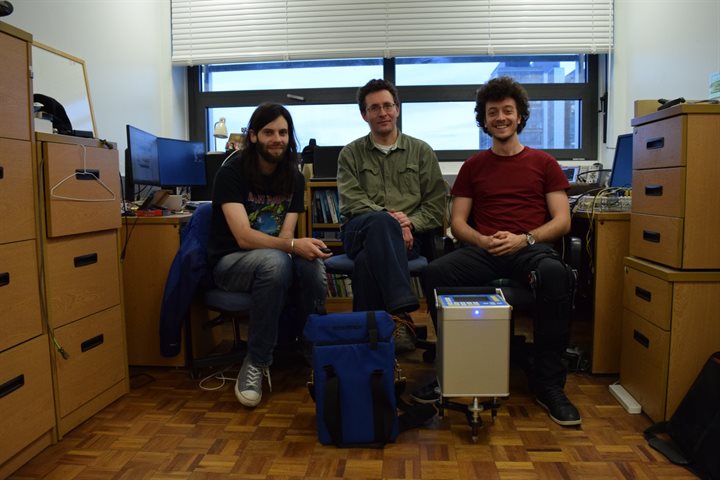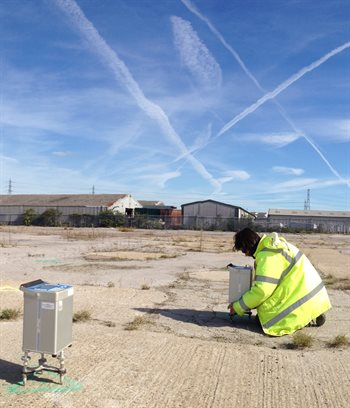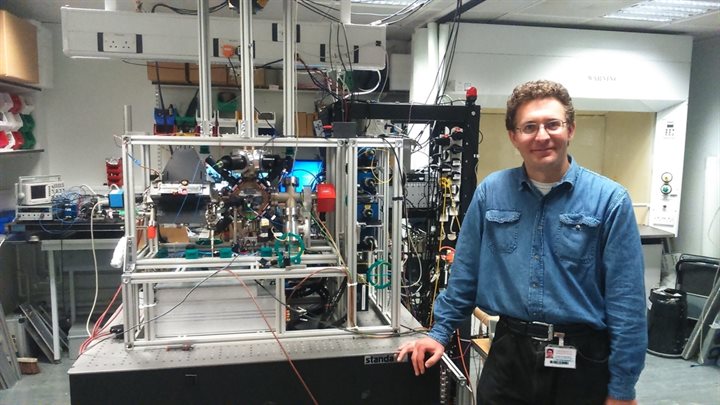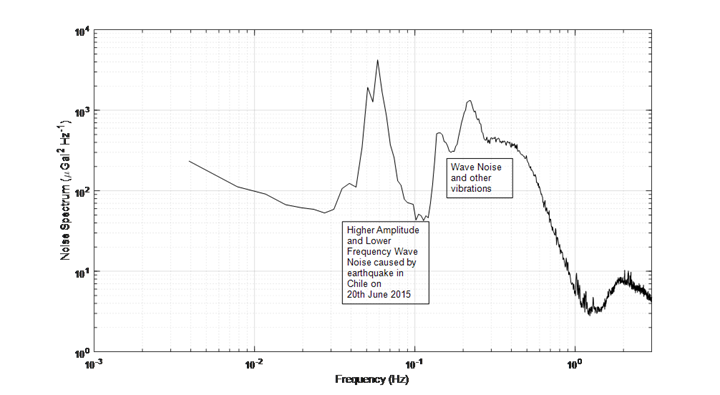The GGTOP project was an EPSRC-funded, multi-university, multi-disciplinary project to consider now cold-atom gravity gradient sensor might revolutionise micro-gravity surveying. Classical geophysical sensors are shielded by man-made objects such as asphalt and telecommunications cables near the surface and attenuated by the soil.Thus deep objects such as sewers and sink holes are often impossible to detect. Gravity is not shielded in the same way and so has the potential to detect problematic targets.
The team of researchers responsible for delivering the work were (from left-to-right) Dr Daniel Boddice, Dr Yuriy Goncharenko and Dr Anthony Rodgers (pictured below). In the foreground is a conventional Scintrex CG5 graviometer based on a spring-mass sub-system.

Dr Daniel Boddice (pictured below) is a scientist with a background in archaeology and field geophysics. He will often be found surveying sites in conjunction with our industrial partners.

Dr Anthony Rodgers was awarded his PhD on the topic of Bayesian inference algorithms for use in gravity surveying. One of the tasks required the calibration of gravity sensors. This was achieved by surveying over concrete blocks of known size and mass.
Dr. Yuriy Goncharenko, (pictured below in front of the cold-atom graviometer developed by the School of Physics), was responsible for correlating the noise detected by the gravity sensors and the noise measured on the UK seismic monitoring network – thus being able to predict on which days the gravity surveyors should remain at home rather than collecting data that could not be used.

 Dan and Yuriy were also responsible for improving the signal processing of a gravity survey (see graph above). Such surveys are very slow with each spatial position requiring an observation of between 30 and 255 seconds. Current instruments sample at a 6 Hz rate and all the data is averaged to provide a single estimate of the gravity value per survey point. Averaging is only optimal when the noise spectrum is white, whereas one of our data records shows both ocean wave noise and earthquake noise originating in Chile. By taking the current noise spectral estimate into account, we believe that the time spent on a survey might be reduced by a factor of four – leading to a very significant cost saving.
Dan and Yuriy were also responsible for improving the signal processing of a gravity survey (see graph above). Such surveys are very slow with each spatial position requiring an observation of between 30 and 255 seconds. Current instruments sample at a 6 Hz rate and all the data is averaged to provide a single estimate of the gravity value per survey point. Averaging is only optimal when the noise spectrum is white, whereas one of our data records shows both ocean wave noise and earthquake noise originating in Chile. By taking the current noise spectral estimate into account, we believe that the time spent on a survey might be reduced by a factor of four – leading to a very significant cost saving.